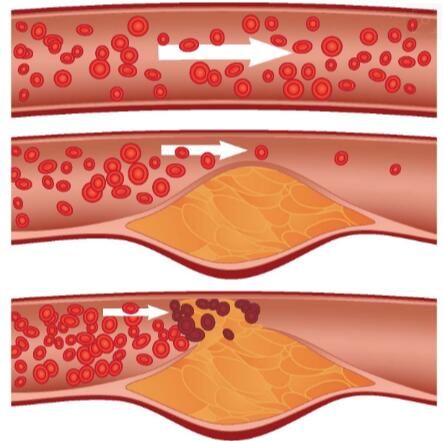Cell Metabol: Scientists hope to treat atherosclerotic disease by regulating the clock
Release date: 2018-06-06
The biological clock can control all the important functions in the body. There will be some fluctuations in body temperature, blood pressure and the release of certain enzymes during the day. This is called the circadian rhythm. Recently, from Ludwig Maximilian Munich University scientists have first demonstrated the effects of circadian rhythms on atherosclerosis in the body. Atherosclerosis is a vascular disease that eventually leads to heart disease and stroke in individuals. Research published in the international journal Cell Metabolism Or, may be expected to help researchers develop new disease therapies.

Image source: jax.org
During the development of atherosclerosis, fat deposits form on the inner wall of the aorta, and immune cells enter the site of injury from the blood and attract more cells through the signal substance until the immune response eventually "derails." Atherosclerosis inflammation lasts for several years. However, the researchers studied mice with atherosclerosis and found that the recruitment of these cells was affected by the circadian rhythm. At a certain time of the day, white blood cells reached the artery. The level of the inflammatory center is three times that of other times, and this rhythmic migration pattern changes with the recruitment pattern observed in the venule microcirculation (12 hours).
From a therapeutic point of view, the transition between the two vascular systems is very interesting, and the recruitment of white blood cells in the microcirculatory system is very important for acute infections, such as pneumonia or cystitis. Ideally, for atherosclerotic inflammation, the recruitment of immune cells should stop rather than concentrate on the microcirculation process.
The researchers said that the study was in the early stages of atherosclerosis research. On the one hand, they identified the molecular mechanism by which rhythmic arterial leukocyte migration is controlled, and on the other hand, this pathway The timing inhibition may be centered on the chemokine CCL2, which blocks the recruitment of cells in atherosclerotic regions but does not affect the migration of leukocytes in microvessels. This study illustrates how circadian rhythm patterns can be used as a timed therapeutic intervention. Thereby enhancing the efficiency of the therapy and reducing the occurrence of side effects.
In later studies, the researchers wanted to delve deeper into the extent to which circadian rhythms could lead to instability in advanced atherosclerotic disease. In addition, researchers hope to focus on circadian rhythms during atherosclerotic deposition. Regulatory mechanisms, such as whether the death of cells in the circadian rhythm mode is controlled.
Original source: Carla Winter, Carlos Silvestre-Roig, Almudena Ortega-Gomez, et al. Chrono-pharmacological Targeting of the CCL2-CCR2 Axis Ameliorates Atherosclerosis. Cell Metabolism, 2018 DOI: 10.1016/j.cmet.2018.05.002
Source: Bio Valley
Chaga Mushroom Extract,Edible Fungus Extract,Mushroom Extract,best chaga mushroom extract,inonotus obliquus extract
Shaanxi Zhongyi Kangjian Biotechnology Co.,Ltd , https://www.zhongyiherbs.com